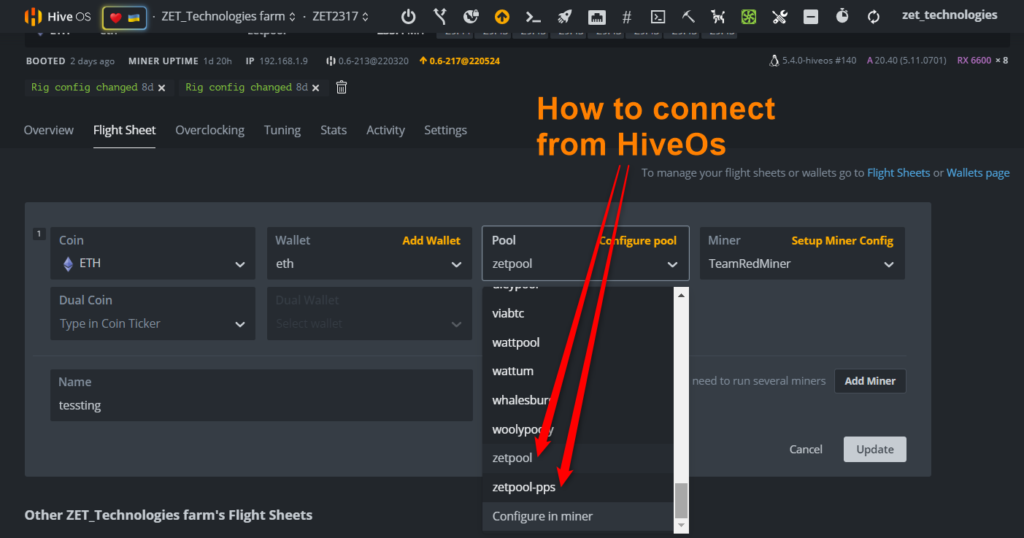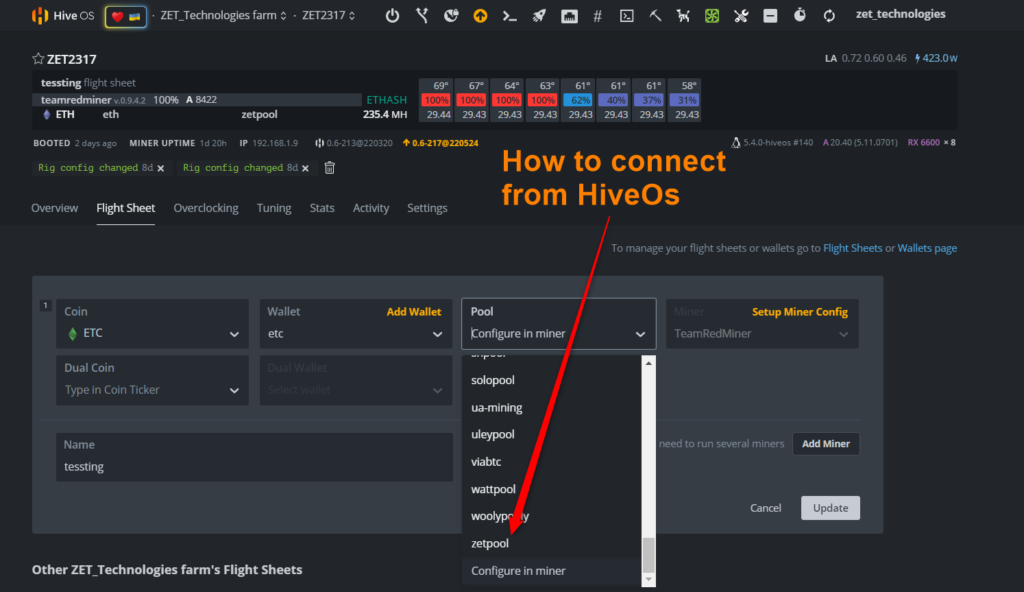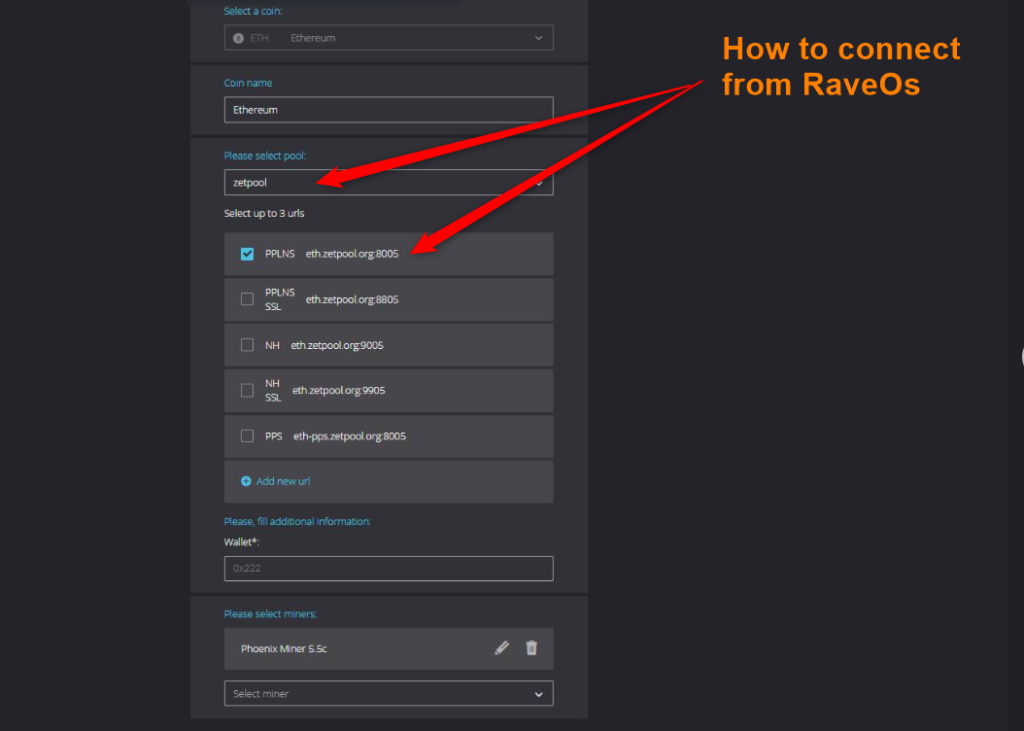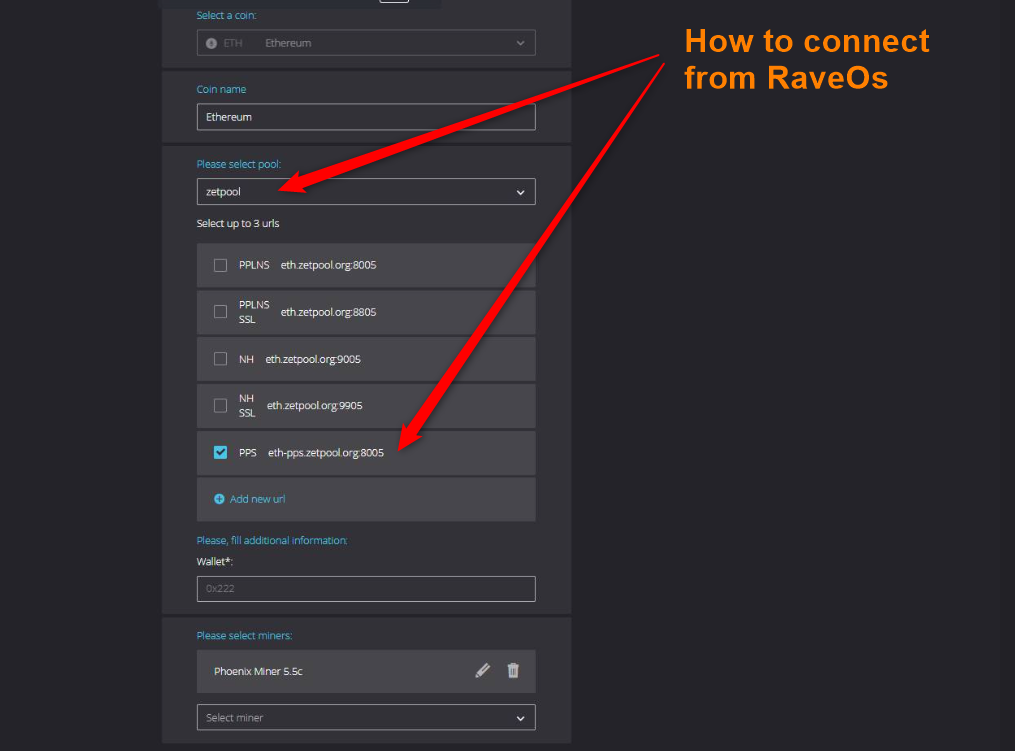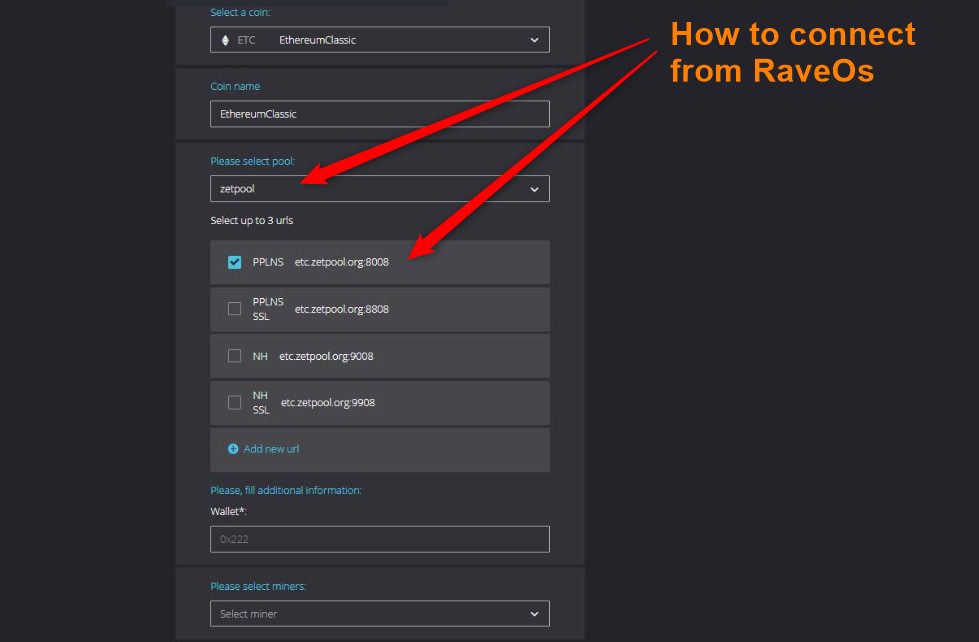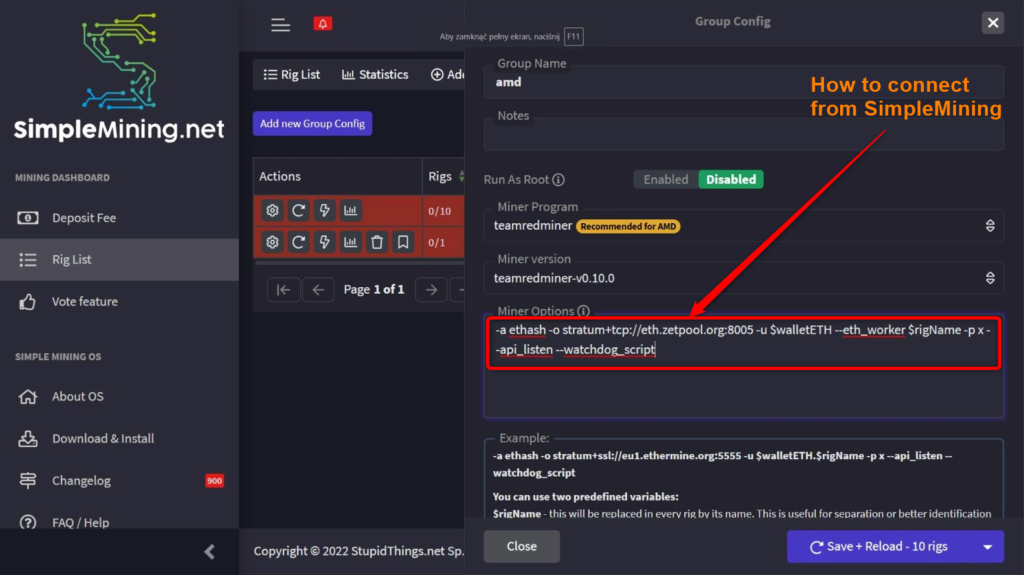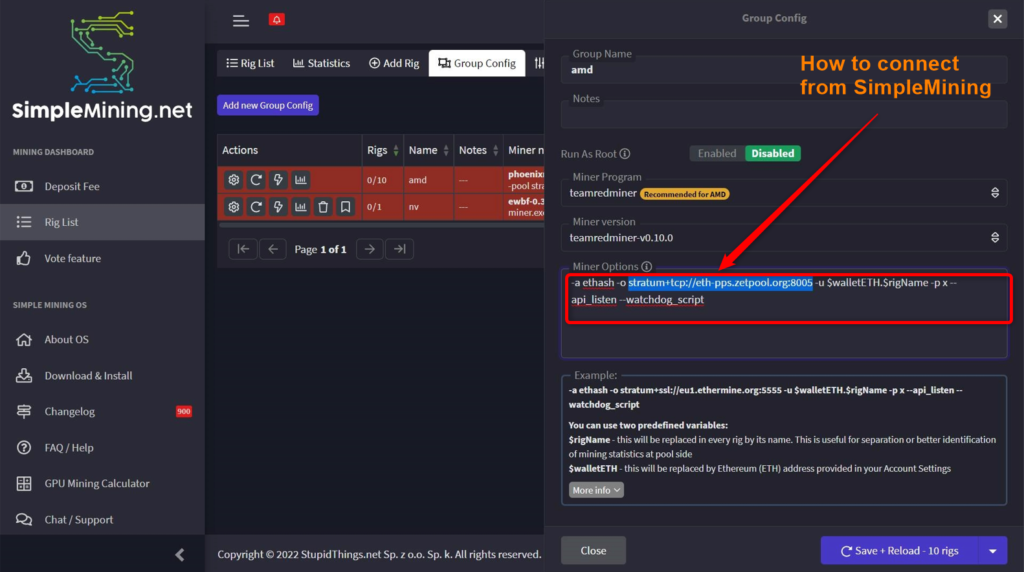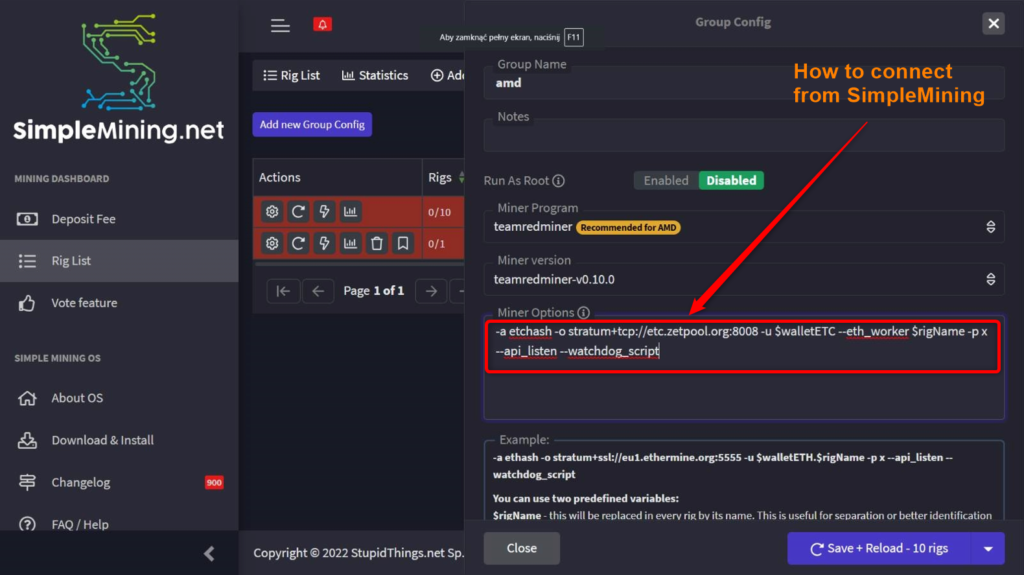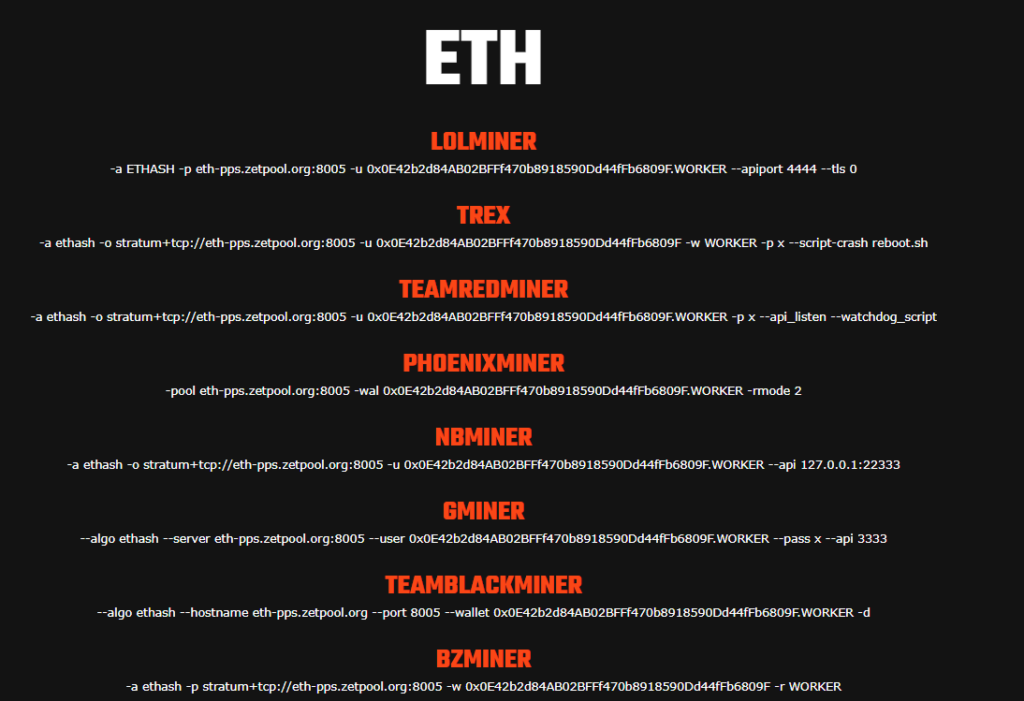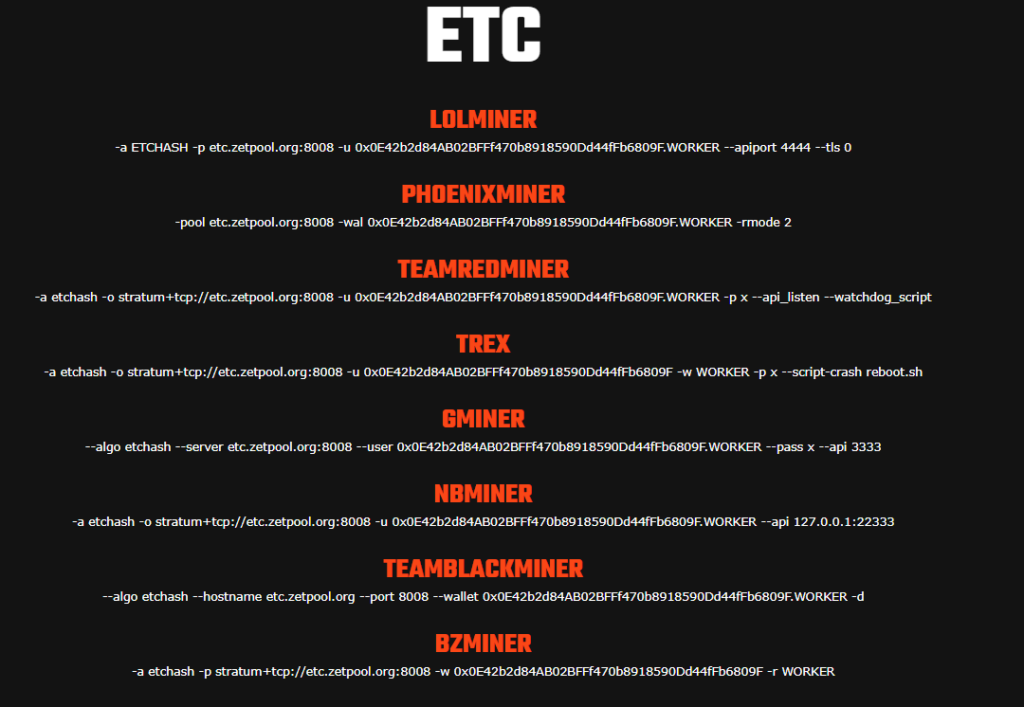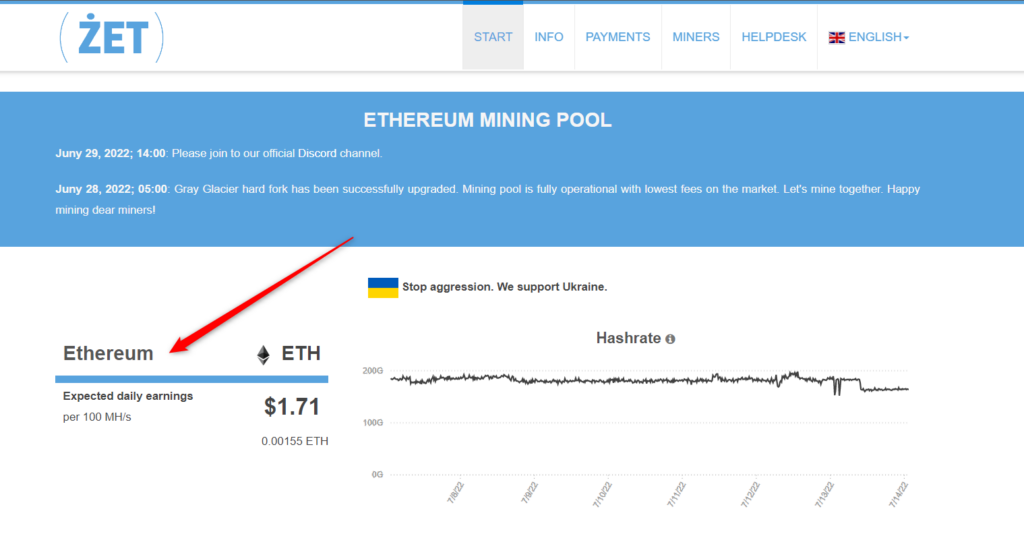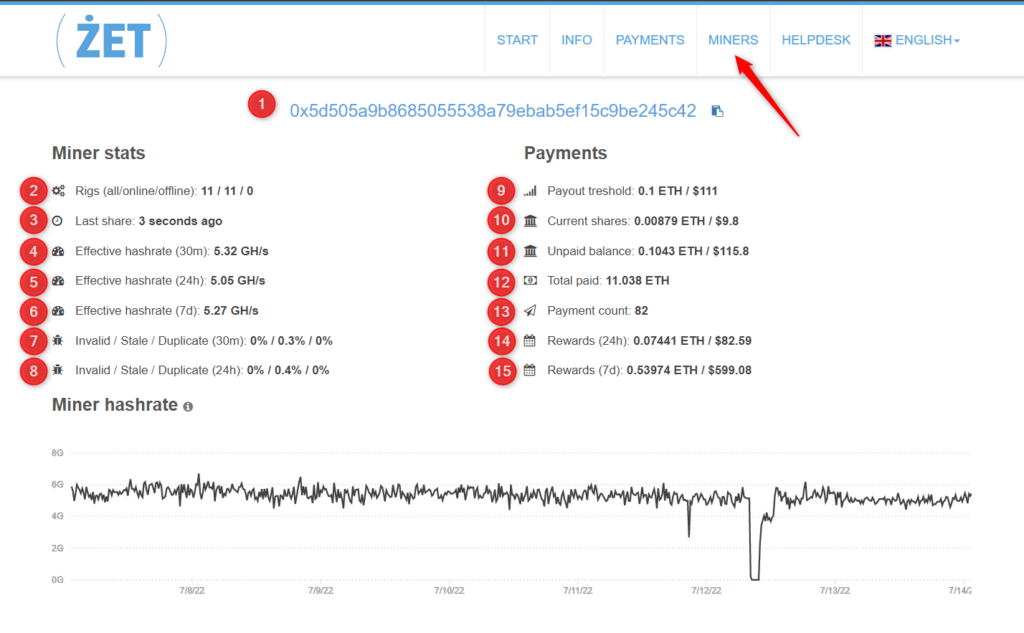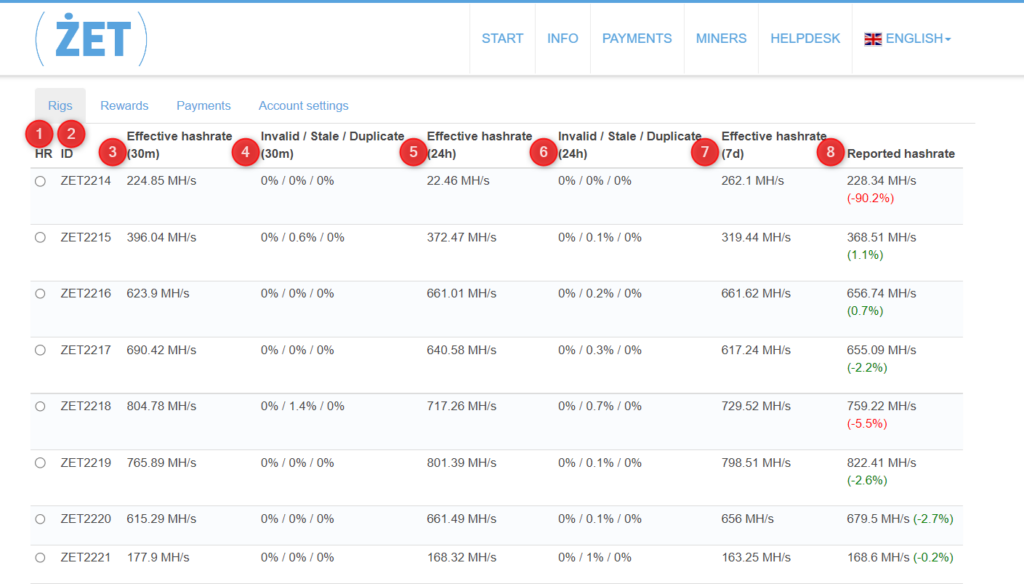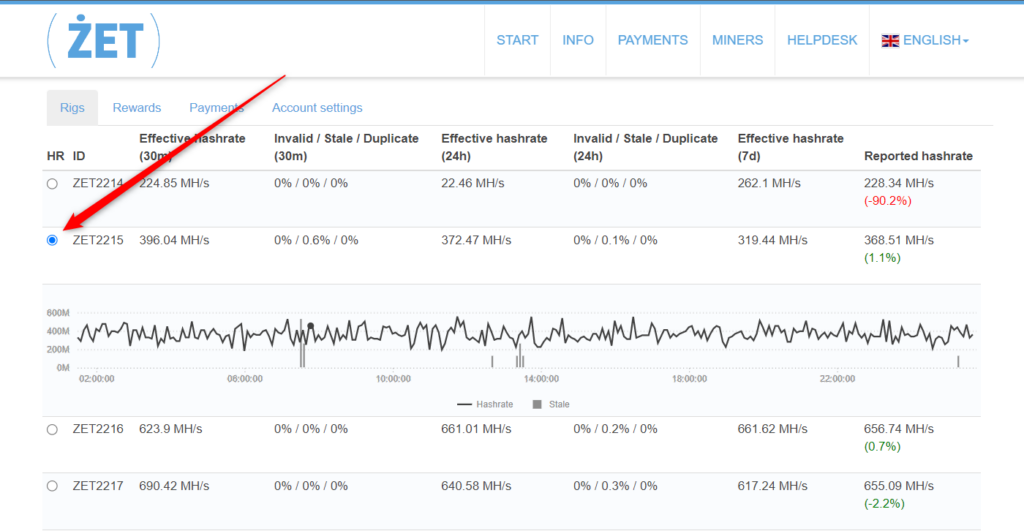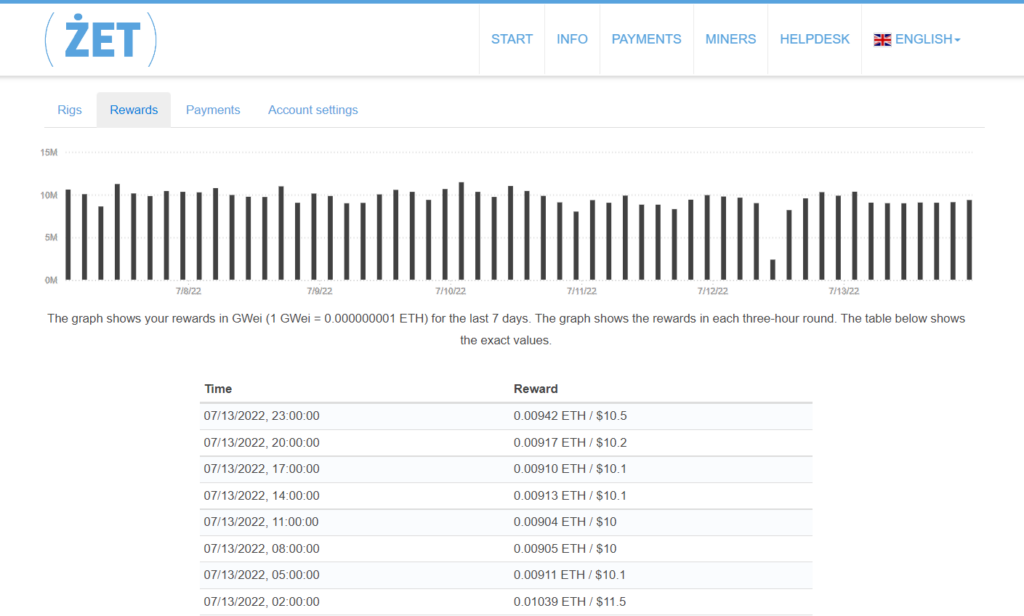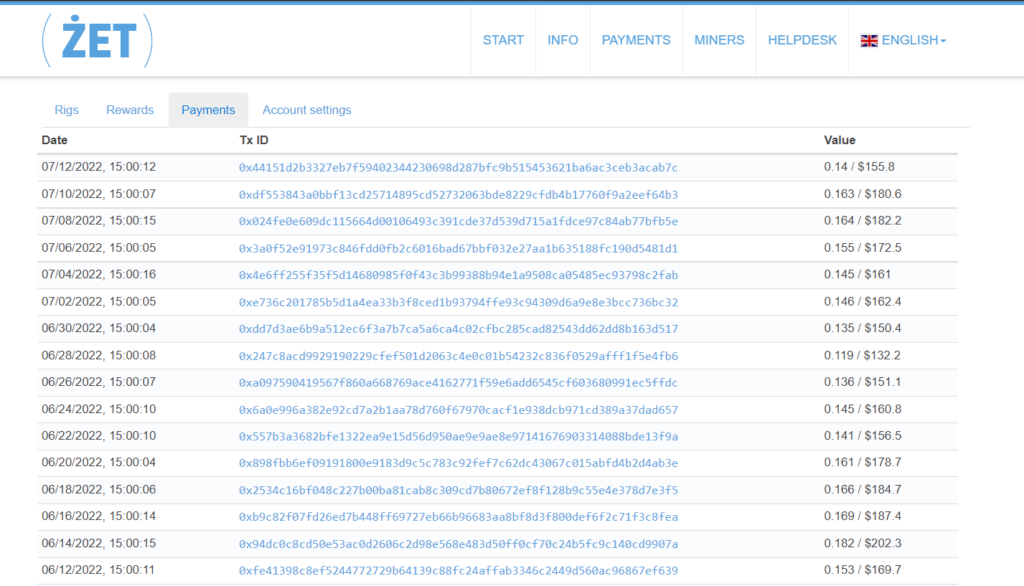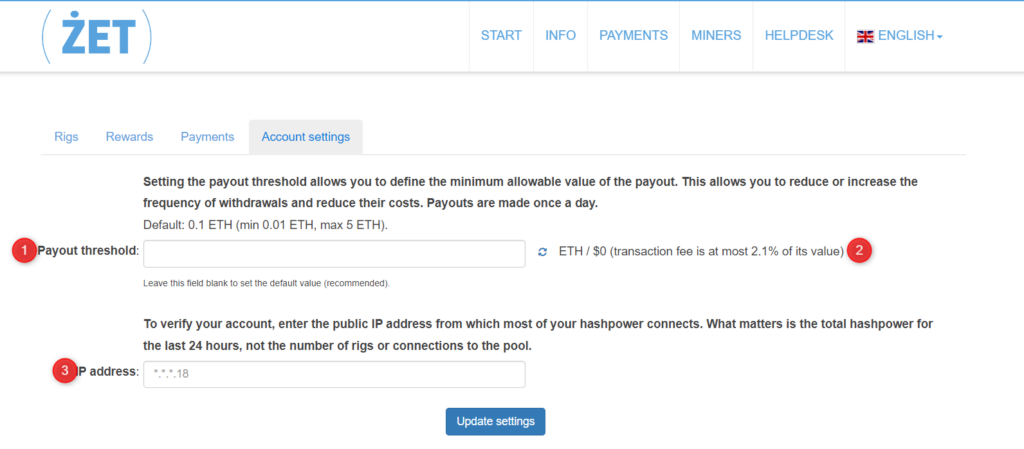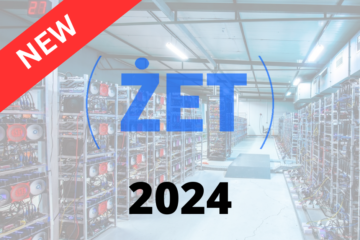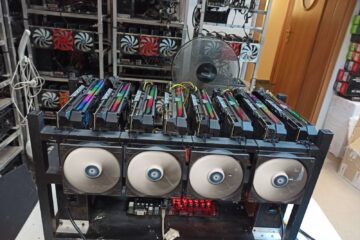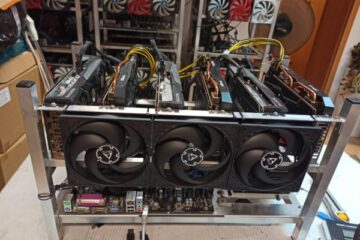ŻET mining pools (Zetpool) is a network established in 2016, which brings together miners with a total computing power of over 500 GH / s. Today, the offer includes three servers for two cryptocurrencies: Ethereum and Ethereum Classic. Each of the servers has its own characteristics, which you can learn more about here. Below we will focus on describing the most important user interface functionalities in the Zetpool.
1. How to start?
Zetpool’s servers are fully open to every miner, thanks to 5 years of activity in the mining industry, they have gained recognition and are available in most popular mining software.
a) HiveOs
b) RaveOs
c) SimpleMining
2. Ready to go configurations for the most popular mining software:
Ready to go configurations for the most popular mining software are available here.
3. Description of the user interface
1. Miner’s address, it is possible to copy it to the clipboard and check the account history in the blockchain database.
2. List of mining rigs on the miner’s account.
3. Information about when the miner sent his share to the pool. The data is updated on a regular basis, every several seconds (!). No need to wait long time for readings as it happens on others mining pools.
4. A brief reading of the processing power may differ significantly from the reported hashrate.
5. Daily reading of computing power, the result should be the same as the reported hashrate.
6. Hashrate readings of a longer peirod give the most accurate result. In order to obtain the correct measurement, continuous operation is necessary for the last 7 days.
7. Statistics on incorrect shares within the specified time frame.
8. Statistics on invalid shares within the specified time frame.
9. Once the withdrawal threshold is reached, the funds will be automatically ordered for execution in the next withdrawal session. You can edit the threshold yourself at any time.
10. The most recent mined coins to be added to the pending balance.
11. Funds waiting to reach the payout threshold.
12. Total sum of funds paid out.
13. Total amount of disbursed payments made.
14. Remuneration for the last day.
15. Remuneration for the last 7 days.
1. The button that allows you to view the history of the machine’s work for the last 24 hours, applies to each mining rig separately. A very useful tool in the diagnosis of cryptocurrency miners.
2. The name of the mining rig in the miner’s account. Each properly defined worker should have a separate name.
3. A brief reading of the computing power may differ significantly from the reported hashrate.
4. Statistics on invalid shares within the specified time frame.
5. Daily reading of computing power, the result should be the same as the reported hashrate.
6. Statistics on incorrect shares within the specified time frame.
7. Hashrate readings of a longer peirod give the most accurate result. In order to obtain the correct measurement, continuous operation is necessary for the last 7 days.
8. Live reading of hashrate reported by miner. The data is updated on a regular basis, every several seconds (!). No need to wait for a readings to appear. Additionally, Zetpool computes how much the hashrate sent by miner has been effectively absorbed. Power losses down to -5% are within the normal range (they are marked in green in the miner’s panel). In order for this mechanism to pass the test, continuous operation is required for at least 24 hours. Thanks to this, each miner can independently check how efficiently his mining rig connects to the pool’s servers.
After selecting a specific machine from the list of mining rig, a detailed diagram will appear showing the operation of this machine for the last 24 hours. A very useful tool in the diagnosis of cryptocurrency miners.
Detailed reports on obtained remuneration. Each mini-cycle consists of a 3-hour round. The history covers the last 7 days.
A detailed list of withdrawals made by the Zetpool: date, link to the blockchain database and the amount of withdrawals.
1. Each miner can set an individual payout threshold on his own. Setting the payout threshold allows you to define the minimum allowable value of the payout. This allows you to reduce or increase the frequency of withdrawals and reduce their costs. Payouts are made once a day.
2. The Zetpool algorithm will calculate what % of the payout value is constituted by the network fee. Importantly, the network fee is fixed, so in order to reduce its value, we recommend setting the highest possible payout thresholds. The network fee is not charged by the Zetpool but by the Ethereum network.
3. To verify the account, enter the public IP address from which most of the miner’s power connects. What matters is the total hashrate for the last 24 hours, not the number of mining rigs or connections to the pool.
